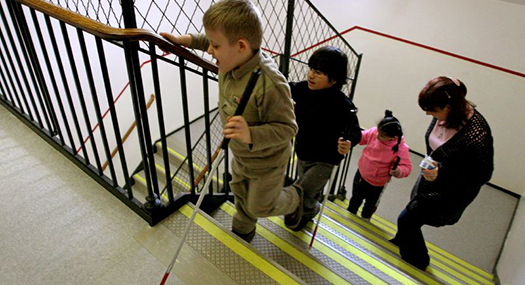Editor’s note: In the United States, October 15 is celebrated as White Cane Awareness Day — originally established as White Cane Safety Day by President Lyndon B. Johnson in 1964. White canes are a powerful mobility tool and symbol of independence for people who are blind, deafblind, or have low vision.
April 25 is International Guide Dog Day, which recognizes and celebrates the crucial role that working dogs play in enabling and supporting people who are blind or visually impaired to get around safely and independently. To that end, here at AFB we asked some of our colleagues to share their thoughts about getting around as a blind individual, their own dog guides, and the special relationship they have with their canine counterparts.
White Cane Day is October 15! Every year since it was first established in 1964, this day has been set aside to celebrate the white cane as a symbol of independence and mobility for people who are blind or visually impaired.
In honor of White Cane Day, the American Foundation for the Blind is celebrating across its entire family of sites:
Image: Left to right, Helen Keller standing with Polly Thomson at the door to their home in Easton, Connecticut, circa 1955.
Editor's note: We weren't too surprised to read the following question in the most recent installment of "Dear Prudence" on Slate:
A friend of mine sent me a link to an episode of NPR's "This American Life" on Dan Kish. I had not heard it yet, though I do listen to that show often. I listened to the piece right away, and I thought I would share my take on the piece.
Recently, you may have read a story or seen it on the news about the little boy whose white cane was taken away from him because of behavior reasons. I wanted to take a minute to discuss this situation and why this is so wrong. The purpose of the white cane is to be a tool to allow a person or child who is blind or visually impaired independence.
Hi, I'm Paige, and I'm a dog guide. I've blogged here before, and so has my master, Crista Earl, who wrote a several-part diary telling how we first met. I wanted to give a shout-out to all my fellow dog guides because it's September, which is National Guide Dog Month.
Take a Hike!
It's a great time of year to get outdoors and get moving, so AFB is talking about hiking as a recreational activity for people who are blind or visually impaired.
VisionAware's Ashley Nemeth shares her love of hiking and offers helpful tips on hiking with a cane and with a guide dog.





